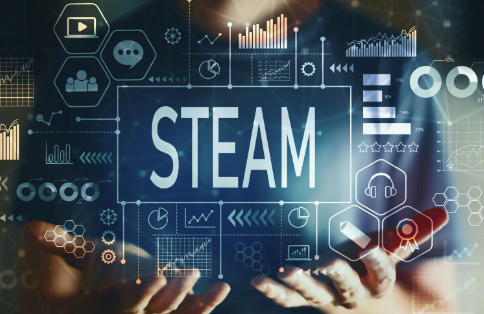
This demand has led schools to teachers. As one saying goes: “If you put out a call for innovative or creative people, 100000 might turn up.”
In response to this demand, educationalists have turned to STEAM as a powerful framework for fostering creativity and innovation in students. STEAM stands for Science, Technology, Engineering, Arts and Mathematics, and is a way of learning where these subjects are taught together in an integrated manner that encourages imagination, encourages questioning and encourages exploration. In this paper we look at the role of STEAM education in encouraging creativity and innovation, its impact on preparing students for the 21st century future.
Encouraging Interdisciplinary Thinking:
One of the most important principles of STEAM education is to foster interdisciplinary thinking. By integrating the science, engineering, technology, artsts and mathematics into a cohesive curriculum, STEAM teaches its students to see across and through these different content areas. They take a broader view of things than people trained in any one discipline might do: students can approach problems from different perspectives and be creative in using knowledge from various subjects. This interdisciplinary approach closely resembles the real-life challenges of their future careers—solutions may often require a mix of technical expertise, imagination and cooperation between disciplines.
For instance, a project-based learning activity in a STEAM classroom might ask students to design and build a sustainable city. To carry out this kind of project, students would need to use their understanding of environmental science to understand the impact of urbanization on ecosystems, their mathematics skills to calculate how much energy resources and raw materials are consumed in producing what they eat and wear; their engineering skills to design infrastructure, transport systems et al.; their arts skills to make pictures showing visually what these things might look like in the future. Through this interdisciplinary approach, students come to a deeper understanding of complex problems and learn how to apply their knowledge in creative and innovative ways.
Fostering creative problem-solving
Also, STEAM education plays an important role in fostering creative problem-solving skills. In an ever-changing world full of complex issues and interrelated threats, it has never been more important for us to think just as artfully adaptively. Rather than training students to seek pre-determined answers in textbooks or aiming just for “the correct” response from an audience full of similarly well-instructed individuals, STEAM education is about nourishing the creative process itself. It provides young people opportunities not only solve problems but also to discover what might be right and wrong; fail with several potential solutions or alternatives then through exploring different approaches learn lessons that can still change one’s future.
For instance, in one robotics challenge, students might be given the task of creating a robot which can find it way through an obstacle course and do chores. In fulfilling such challenges, students must not only apply their technical knowledge of robotics and programming but also think creatively about how to optimize the design and performance of a device. Along the way they will hit setbacks for sure, but these troughs offer golden opportunities to learn.
By accepting the natural sequence of failure as a part in learning process, people gain resilience, tenacity and confidence that they can solve difficult problems creatively themselves.Promoting innovation and entrepreneurshipSTEAM education also plays an important role in promoting innovation and entrepreneurship in the ranks of its students. By giving students the ability to identify needs, develop solutions, and finally bring their concepts to life in products. STEAM education cultivates a time-honored entrepreneurial mindset — essential for success today whether young people start their own businesses or else move off into stem professions. Whether they follow careers as leaders in their local communities or become employers themselves, everything young people gain from STEAM education will be of assistance to them in when choosing what path to take later on.
Students must make something singly or even in a team without any use of standard parts. For example, in a STEAM classroom, students could undergo a design challenge in which they have been tasked to design a product or service for addressing the problems of everyday life. Research, brainstorming, prototyping and testing all feature prominently in this design process; meanwhile through honing their critical thinking, communication skills and ability to collaborate students are constantly developing themselves organically. As a result of the challenge, students understand better the innovation process, more capable of their own ideas and will to further pursue them themselves. Closing Thoughts:
STEAM education isn’t just about preparing people for careers in science, technology, engineering, arts and mathematics; it’s a method of empowering them to think critically, creatively and collaboratively within a growingly varied world. By embracing cross-disciplinary thinking, encouraging creative problem solving and fostering innovation as well as entrepreneurship, STEAM education gives students both the right skills and attitudes they need to flourish in 21st Century life. As teachers introduce STEAM principles into their own classrooms, we can well expect that tomorrow an era will emerge where innovation and creativity are not just approved but seen as necessary prerequisites to success.